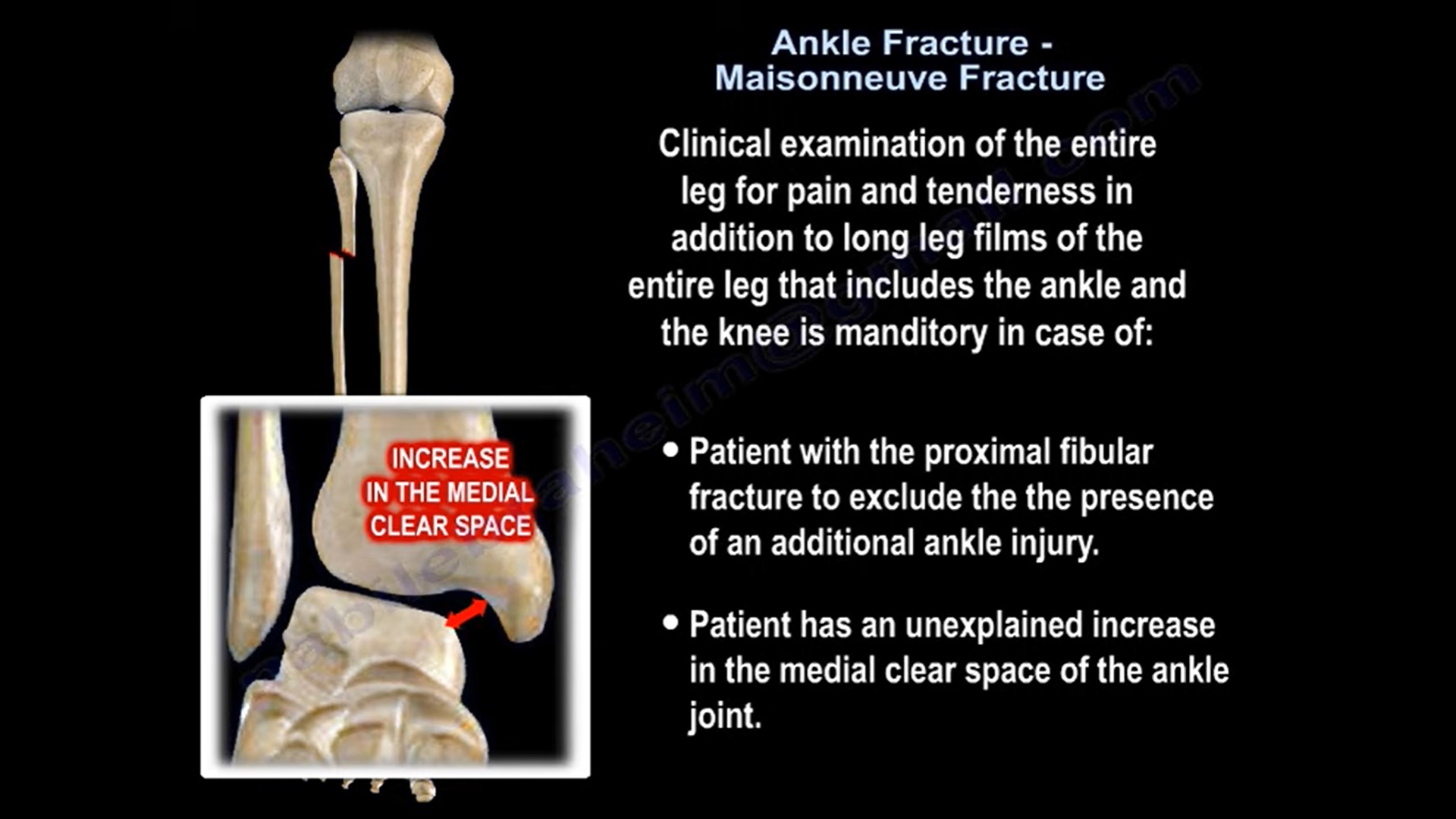Courtesy: Prof Nabil EBraheim, University of Toledo, Ohio, USA
MAISONNEUVE FRACTURE OF ANKLE
- Maisonneuve fracture involves fracture of the proximal fibula associated with an occult unstable
injury of the ankle. - Problem in these patients occurs when the ankle injury is presented without a fracture of the lateral malleolus or the medial malleolus and the injury is mistakenly diagnosed as an ankle sprain and the proximal fibular fracture is missed.
- Examine the leg for tenderness in the proximal fibula to diagnose a proximal fibular fracture.
- Patient could be mistakenly treated for having isolated proximal fibular fracture alone , ankle injury is missed.
- High index of suspicion is necessary to diagnose and treat this injury
- Maisonneuve fracture = syndesmotic injury
- Syndesmotic injury = syndesmotic reduction and fixation
- If ankle x rays show medial or posterior malleolar fracture or medial clear space widening with no fracture of the lateral malleolus, then you must obtain long leg films to assess possible proximal fibular fracture.
- Clinical examination of the entire leg for pain and tenderness in addition to long leg films of the
entire leg that includes the ankle and the knee is mandatory in case of
1. Patients with the proximal fibular fracture to exclude the presence of an additional ankle injury
2. Patients with unexplained increase in the medial clear space of the ankle joint
Look for signs of syndesmotic injury
1. Unexplained increase in medial clear space
2. Tibiofibular clear space is widened (normally should be less than 5 mm)
Mechanism of injury :
- It is explained by the rotational force of the ankle with transmission of the force through the interosseous membrane , which exits through a proximal fibular fracture.
- The fracture occurs from external rotation of the foot , most often with pronation mechanism.
- If you don’t see a fracture of the fibula then do a squeeze test or external rotation test (both will show syndesmotic injury)
- The injury can involve the deltoid ligament injury or medial malleolar fracture medially and a fibular fracture proximally.
- Additionally the tibiofibular ligaments are also involved which can be the anterior tibiofibular ligament ,interosseous ligament , the posterior tibiofibular ligament or the posterior malleolar fracture
Treatment:
- Reduction and fixation
- Fix the tibiofibular syndesmotic injury using syndesmotic screws.
- If there is deltoid ligament tear leave it alone.
- Fix the fracture of medial malleolus if present.
- If there is proximal fibular fracture on the lateral side leave it alone .
- Fixation of syndesmotic injury has to be stable and adequate.
- Because of the magnitude of the injury ,Maisonneuve fracture might require more number of syndesmotic screws than with a routine ankle fracture with syndesmotic injury
- After the fixation we will give a short leg non weight bearing splint for 6-8 weeks .

Leave a Reply